The Universe of Energy pavilion – and its sole attraction, Ellen’s Energy Adventure – represented a step in Epcot’s evolution. Emblematic of the park’s “awkward teenage years,” the star-powered relaunch of the ride was one of the first pieces in a gradual shift between the storied, grand, stoic dark rides of old and the more modern, character-infused park we’re meeting today.
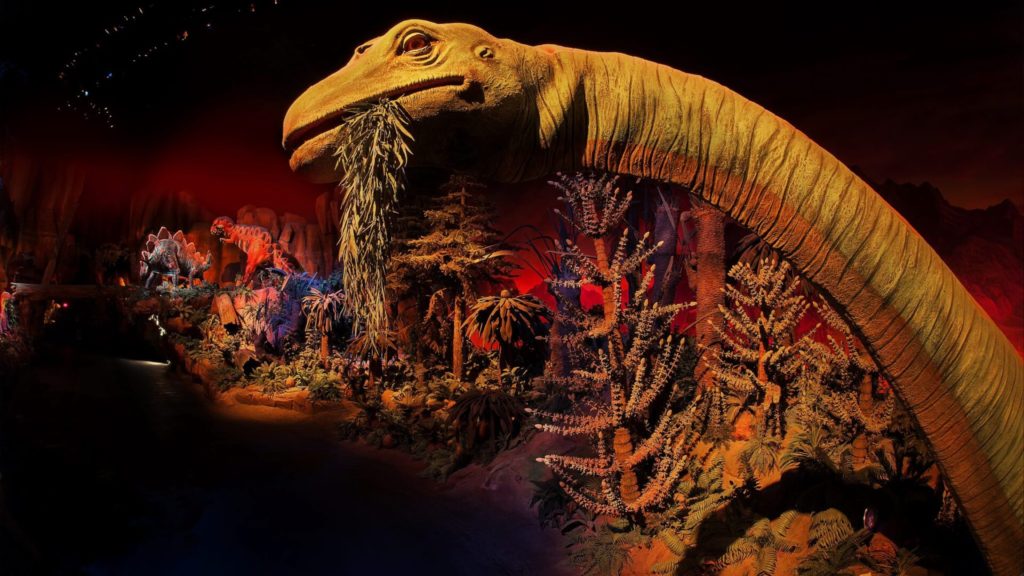
In some ways, you could list Ellen’s Energy Adventure as one of the first times EPCOT played host to “modern,” “current,” recognizable characters… even if those characters were well-known actors playing themselves. More timely than anything EPCOT had offered before, Ellen’s Adventure was a toe in the water of a new pop-culture-oriented M.O.
But that also meant that, via the school of hard knocks, Disney was destined to find out some tough truths about Ellen’s Energy Adventure, and Universe of Energy as a whole… Here are just a few chips away that might’ve helped lead to the attraction’s upcoming eventual demise.
Lesson 1: Celebrities limit lifespan
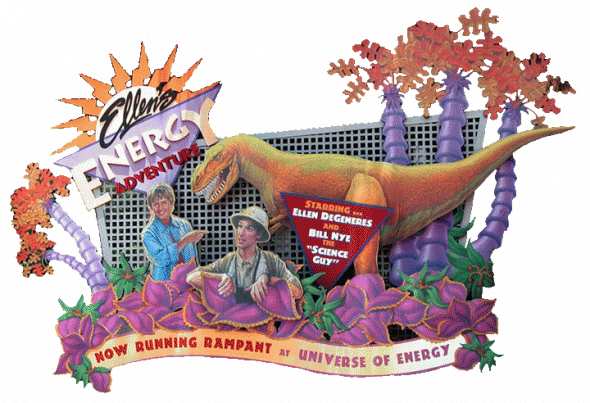
In the ’80s and ’90s, star-power seemed a panacea to all that ailed Disney Parks. If leaders could simply leverage Disney’s newfound IPs, acquisitions, and celebrity partners, they could breathe new life into Disney Parks and draw young people to see the stars that mattered to them. An inherent piece of the “Ride the Movies” mindset, this play to pop culture is exactly what formed the beginnings of Eisner’s theme park revolution, embodied, for example, by the Lost Legend: Captain EO and the magnetic draw of Michael Jackson.
But that star power comes at substantial risk… What Disney was just on the verge of learning by way of Michael Jackson is that when you involve real, identifiable figures – even “playing themselves”! – in an attraction, you indivisibly tie that attraction both to an era and to a real figure whose personal life and career trajectory you cannot control. (Accusations surrounding Jackson’s personal life were only beginning in 1993, just as work on Ellen’s Energy Adventure would’ve been ramping up.)

In that regard, Disney ended up being lucky that Ellen DeGeneres, Bill Nye, and Alex Trebek turned out to be fairly benign – and steadily recognizable – public figures for the course of the attraction’s run. Of the trio, only Ellen encountered scandals. The first (her coming out as a lesbian) predated Ellen’s Energy Adventure. The second (extensive accusations that she contributed to a “toxic” environment at her long-running self-titled talk show) came after the ride’s closure, in 2020.
But even if your celebrity du jour manages to stay on the straight and narrow for the multi-decade run of a ride, there’s another risk to involving real people, pop culture, and public figures in an attraction. For better or worse, Ellen and Bill Nye today are a whole lot older than the Ellen and Bill Nye on the ride. And after the tragic loss of Alex Trebek in 2020, Jeopardy has two new hosts – Ken Jennings and Mayim Bialik.
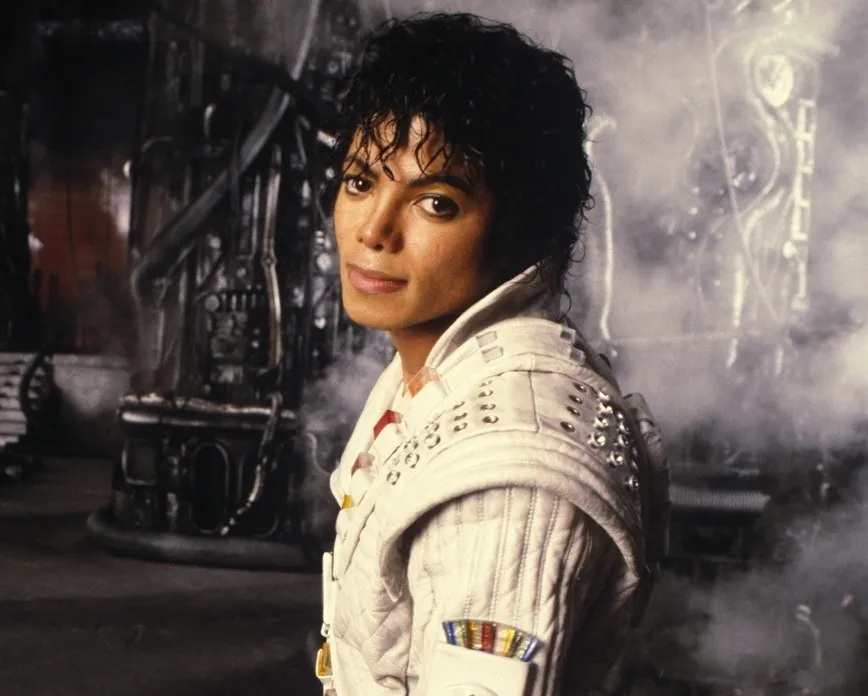
In other words, if Ellen’s Energy Adventure were still around today, it would instantly betray its age. Maybe that’s okay through the lens of nostalgia or comedy (see again, Michael Jackson in Captain EO, Rosie O’Donnell hosting California Adventure’s Boudin Bakery Tour, or Patrick Warburton on Soarin’, all of whom are recognizable figures who look a whole lot older in real life than their forever-young theme park avatars).
But in EPCOT, a ride dating itself as a ’90s time capsule feels depressing at best, and scientifically outdated at worst… a cardinal sin in Future World, and especially as it relates to the rapidly-evolving industry of energy!
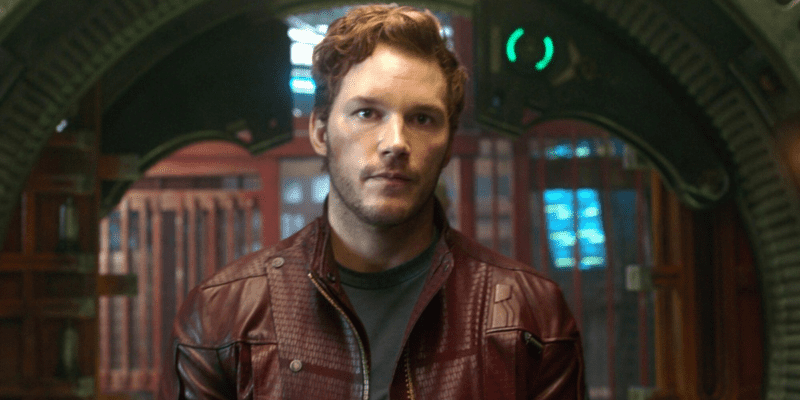
What’s interesting is that – since we’ve entered an age of screen-based rides and specifically movie-themed attractions – Disney has set up the dominoes to learn this lesson all over again. Should Chris Pratt end up embroiled in a scandal, both Disney and Universal will have to do serious work to several rides to omit him. And so it goes with Daisy Ridley, or Tom Holland, or any number of the real people whose presence instantly dates rides to their moment of inception.
Lesson 2: As times change, audiences change
The most damning and regrettable lesson Universe of Energy taught us is one we’re embarrassed to even have to bring up… It was long. Really, really long.
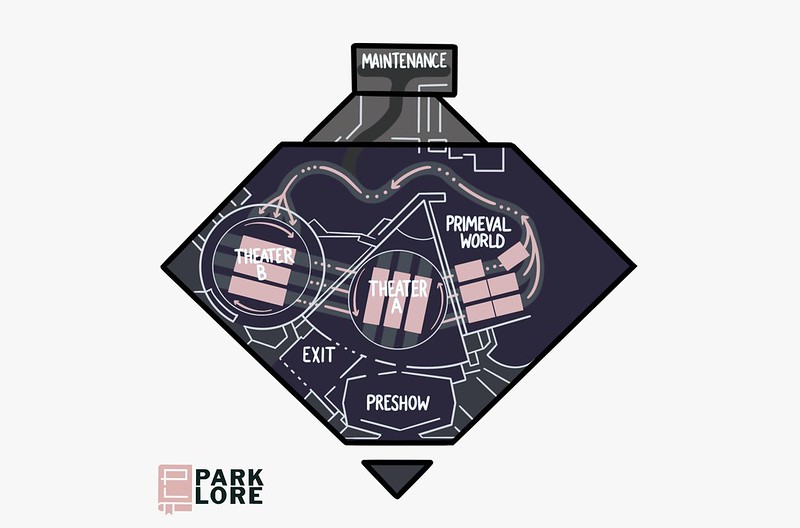
In EPCOT Center’s early days, Universe of Energy was simply the most spectacular of an entire lineup of epic, oversized, massively scaled dark rides through industry. But for audiences of the 21st century, Universe of Energy was an outlier for its length. Today’s guests can’t stay off their cell phones during a 20-minute theme park revue show… much less a 45-minute dark ride. Stunning as it may be and as brilliantly as it might’ve adhered to the principles of Disney’s best dark rides, Ellen’s Energy Adventure was just a commitment.
Especially in an era of FastPass+, dining reservations, and transportation scheduling, a 45-minute attraction might’ve just been too long for audiences and attention spans. Repeated, continuous warnings about the ride’s length in the queue are evidence of just how serious this problem was. And, like it or not, as the ride’s content and stars aged, that commitment became… well… increasingly less worthwhile for many repeat visitors.
Lesson 3: Sponsorship matters
Another growing stain on Universe of Energy? Its sponsorship.

Sure, sponsorship was meant to be the lifeblood of EPCOT Center and its industrious, reality-based attractions… It was the win-win Disney needed, ensuring the attractions would be financed and continuously refreshed, all in exchanged for letting the sponsors put their message and “spin” into the ride.
But something was stirring deep in the American psyche.
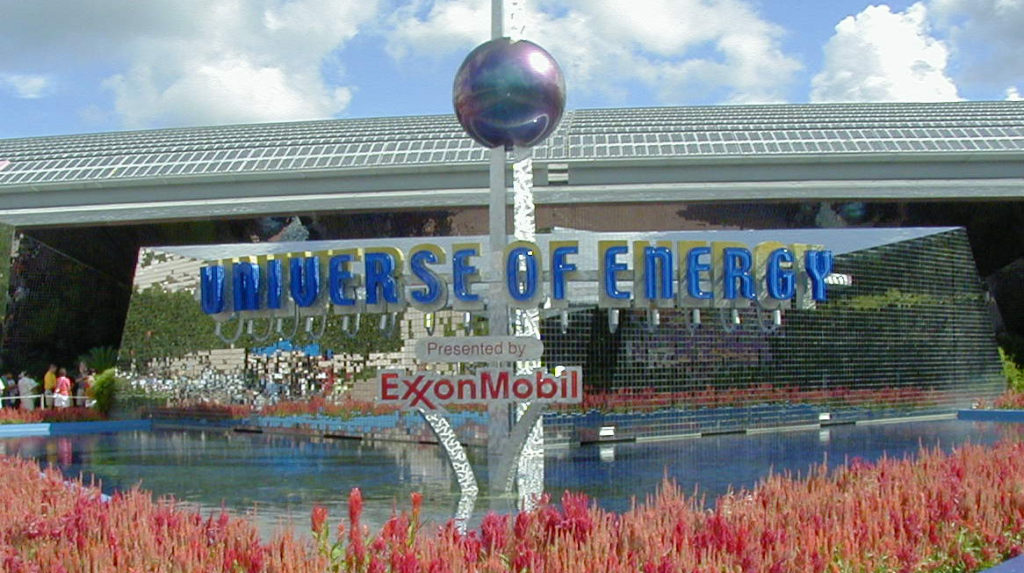
To audiences of mid-century America, there was a true thrill to visiting World’s Fairs and marveling at the wonders of industry; the innovations and new concepts developed by American corporations – the height of capitalism and commercialism, and a glowing example of Americana!
But now, with the New Millennium nearing, American’s attitudes toward corporations began to shift… Wealthy CEOs, golden parachutes, Wall Street executives, lobbying… Blame it on the Internet putting the wealth of human knowledge into our pockets, but gradually and unconsciously, perception shifted.

Exxon, for its part, was still reeling from the 1989 Exxon Valdez oil spill (considered the worst in history) dumping over 10 million gallons of crude oil off the coast of Alaska. Exxon’s response was painfully slow. All the while, the company was earning hundreds of billions of dollars in revenue as gas prices skyrocketed. In turn, it became clear that Exxon was financing to lobby Congress to support climate change denial, and against the scientific consensus that global warming is caused by the burning of fossil fuels… Not exactly EPCOT Center attitude.
On Disney Parks message boards, fans had begun to wonder… do we really want ExxonMobil preaching to us about energy? Is the connection between energy and dinosaurs substantial enough to warrant a full dark ride on the subject? What of emerging energy sources, like solar and wind and hydroelectric? Do we even trust that ExxonMobil would give us the full story…?
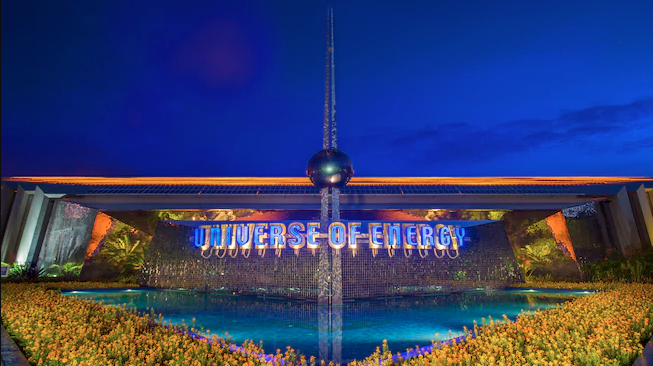
Of course, if you think that’s bad, you should see what happens to Epcot classics when they lose their sponsorship. In 2004, ExxonMobil dropped its 22-year-long sponsorship of the attraction. For many EPCOT dark rides, that’s the end of the story. Look into another Lost Legend: Body Wars to see how a dropped sponsor often means Disney simply drops investment entirely and lets rides wither.
Luckily, Disney must’ve seen fit to continue financing the pavilion on its own, and Universe of Energy closed in 2008 for an extensive refurbishment. It re-opened on March 28, 2009 with upgraded audio systems, refreshed paint both in and on (red, orange, and yellow, harkening back to 1982) the pavilion, and updated ride operating systems. However, the show remained unchanged.
A relief… and yet, a disappointment given that the then-13-year-old overlay was already overdue for a rewrite.
Lesson 4: In staying true, sometimes you become the outlier

As years and years passed, perhaps even ardent fans could agree that Universe of Energy and Ellen’s Energy Adventure simply couldn’t last forever. That’s not a criticism! If EPCOT Center was determined to present actual content about actual areas of science and industry, it would need to change. And it was…
EPCOT Center was renamed simply Epcot, and roundabout the mid-90s, its storied and revered educational dark rides were indeed falling away… Some became character-infused family rides; some were replaced with “brainless” thrill rides only tenuously connected to the massive scientific concepts they feigned to represent; others closed entirely.
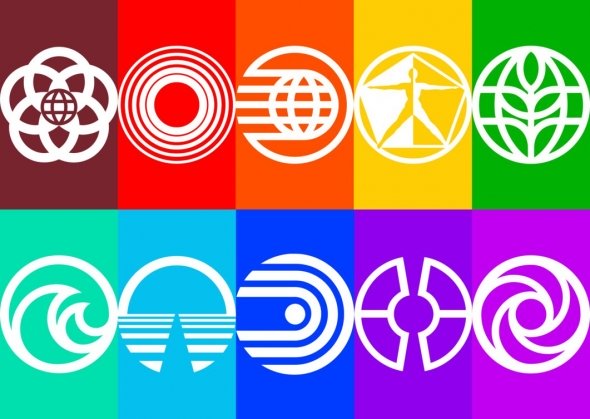
Even the circular logos used to represent the pavilions were done away with, given that now many differed in style and substance… they didn’t feel related anymore, so the unifying icons were dropped.
Universe of Energy was a holdout… one remaining “classic” in a ‘90s redress that – by sticking to its guns as an educational epic dark ride – actually became the exception in a park changing around it! On the next page, we’ll analyze the end of Universe of Energy… and the future of Epcot, forever changed by what was coming next… You may not believe the consequences. Read on…


